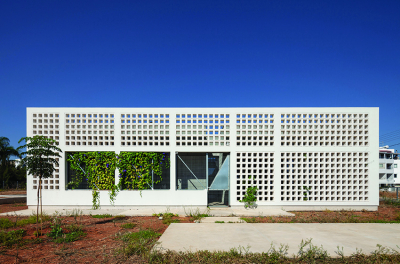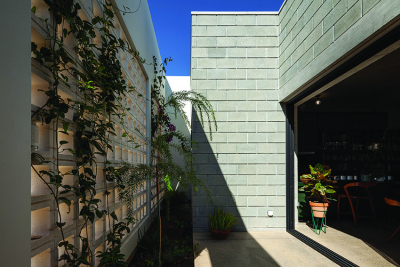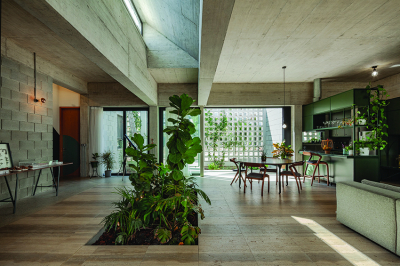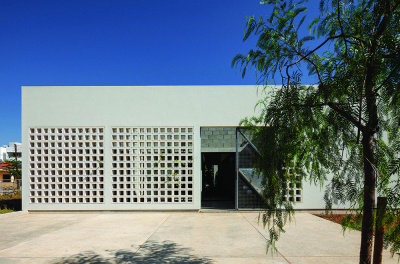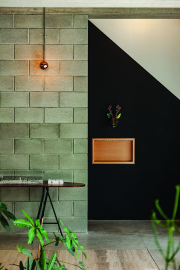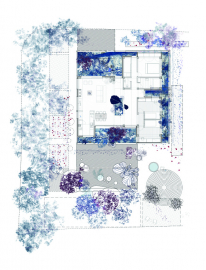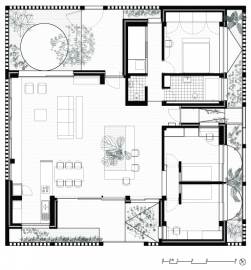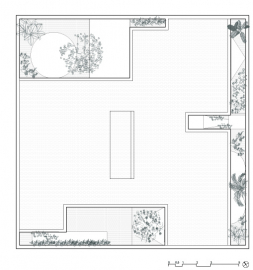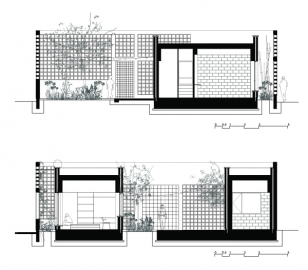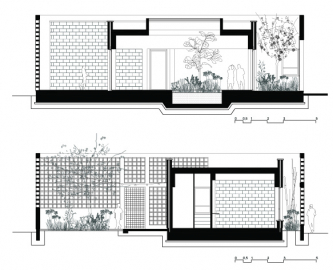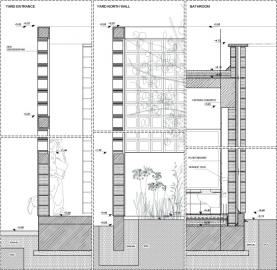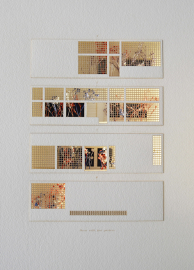A House with Four Gardens
A House with Four Gardens.
In company with the aphid and the grasshopper
But also the spider mite, the tiger moth, the leaf
miner,
The mole and the hover-fly
The praying mantis that devours them all,
We shall be sharing leaves, petals, sky,
in this incredible garden
both they and I transitory.
NICOSSIENSES, Niki Marangou, poet
For this house, placed at a developing suburb at the periphery of the metropolitan area of Nicosia, the enclosed garden becomes part of the domestic life, and in close relevance to the daily domestic routine. A 16 by 16 by 5 metres box includes the necessary living spaces for the daily routine: a living room, a kitchen, three bedrooms, bathroom and a small play space. At the same time the box also includes fragments of nature, in the form of four small gardens, which are considered equally important as a divergence from the daily routine of the family. The small ‘network’ of gardens consists of three open ones that form transitional zones in-between the interior space and the periphery of the exterior wall and one interior garden at the center of the house.
The idea of the enclosed or ‘secret’ garden as part of the domestic space can be found in traditional architecture in Cyprus, and especially in Nicosia, where the commissioned private house is located. The garden traditionally functioned as an incubator of natural matter and nurtured the ‘informal’ part of the domestic life. Historical references from foreign travelers to Nicosia from the 14th Century until today’s references from contemporary Cypriot scholars and writers describe the garden as a space that is surrounded by a high wall and which contains a plethora of ornamental as well as productive plants. It is described as an important part of the domestic life offering pleasant smells and noises, while at the same time it forms the historical urban identity of the city. The family that lives in the house appreciates the close contact with different bits of nature; however the gardens at different parts of the house also help in practical everyday needs, such as for sun filtering, temperature control and airflow control.
The different orientations of the gardens are also destined to offer comfort in the various seasons of the year. The South Garden filters the sun during the summer months and offers a pleasant exterior space during the sunny winter days. The North Garden allows the pleasant northwest summer breeze to enter the house and supplies a part of the house with steady light. The East Garden filters the warming morning sun. Finally, the Garden at the Centre of the house is an indoors garden organizes the circulation. The 4 enclosed gardens also help as incubators for growing up species and testing them in local climate before relocating them in the exterior field that surrounds the house. For the construction we have used simple materials produced by local industries, such as concrete masonry units (CMU) and white concrete units as breeze bricks. The concrete structure in the interior is exposed, while the exterior walls are made of two layers with insulation and air gap inbetween. The gap allows the air to circulate within the walls in order to dry them in winter and cool them in summer. The wood and metal work is hand-made by local craftsmen.

